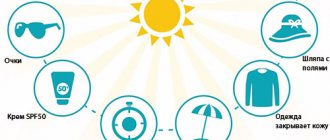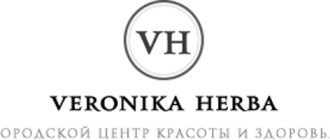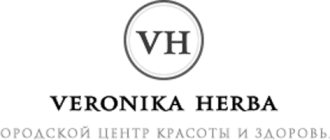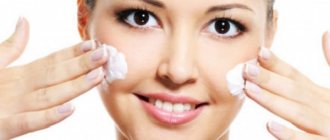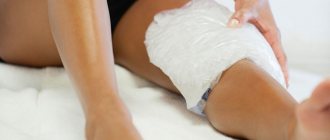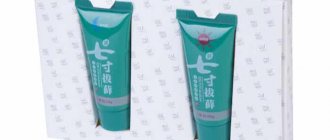Parabens are the most commonly used preservatives used in the production of cosmetics, medicines, and food products. Their distinguishing features are lower toxicity to humans compared to many other substances and high antimicrobial activity, especially against yeasts and molds.
…
The effects of parabens in cosmetics and other industrial products have been studied for many years, and their safety, when used judiciously, has been confirmed by numerous actual results. The characteristics of these preservatives are approved by official organizations and confirmed by certificates, so they are practically safe in high-quality cosmetic products.
However, like any chemicals, such preservatives still have a potential risk of side effects.
What are parabens
To increase the shelf life of cosmetic products and prevent the growth of pathogenic microorganisms in them, manufacturers add preservatives to their composition. Parabens are most often used for this purpose.
According to their chemical structure, these are esters of p-hydroxybenzoic acid. They are included in most cosmetic products:
- methylparaben – 80%;
- propylparaben – 60%;
- butylparaben, ethylparaben - 25%.
Also, substances similar in structure - isobutylparaben, benzylparaben, sodium benzoate - can be used as preservatives. Most creams, mascaras, etc. contain them in low concentrations - from 0.01% to 0.3%. The maximum permissible content according to European standards is 0.4% when using one type of parabens and 0.8% when two such preservatives are added to the composition.
The denser the texture of a cosmetic product (cream, mascara, cosmetic milk), the more preservatives it contains.
Alternative drugs without parabens
There is an alternative to cosmetics with parabens, or rather, there are three options for replacing potentially dangerous cosmetics:
- Homemade cosmetics. Soaps, creams, tonics, eye shadows and similar care or decorative cosmetics can be made with your own hands. And for this purpose, use exclusively natural, safe ingredients that will not cause the slightest harm to the skin or other organs. For example, to make a moisturizer, you can use lanolin, glycerin and vegetable oils (as a base), mineral water, herbal decoctions and freshly squeezed juices, essential oils, liquid vitamins, etc. Such cosmetics will be stored for a short time and only in the refrigerator, but you will be sure that skin care products bring only benefits, their use will not cause incurable diseases in you or your children.
- Purchased handmade cosmetics. This option will be ideal for those who do not have time to prepare the preparations themselves. Private masters value their reputation and use only high-quality ingredients, the safety of which has been proven by clinical studies.
- Purchased cosmetics from large cosmetic brands that have the opportunity to introduce innovative technologies into their own production and allocate significant investments for this. Such drugs will be expensive, they can be stored for a short time, only two or three weeks, but you will have peace of mind about your health.
- Waterless cosmetics. If you use products that do not contain water, then you do not have to worry about the fact that they will contain parabens. Anhydrous products technically do not require a preservative. After all, in order to grow and reproduce, pathogenic microflora require water. However, such cosmetics must be stored and used in a completely dry room. After all, anhydrous preparations cannot retain their original characteristics for a long time if they are used in humid conditions.
As you can see, there is an alternative to cosmetics with parabens. If the issue of safety of care and decorative products is important to you, take a step away from traditional cosmetics and discover natural cosmetics for face and body.
Safety
Is there any harm from parabens added to cosmetics? Their safety has been proven in various studies in both animals and humans:
- study of acute and subacute toxicity;
- study of carcinogenic potential - the ability to cause cancer;
- analysis of the effect on pregnancy and the developing fetus;
- experiments on the processes of absorption, exchange and release of paraben breakdown products;
- tests of skin stimulation and photosensitivity (increased sensitivity to sunlight).
None of them have been scientifically proven to have any negative effects after use. In particular, the relationship between the use of deodorants with parabens and the incidence of breast cancer has been studied in detail. It has not been confirmed. Therefore, the Scientific Committee on Consumer Products of the European Commission (SCCP) concluded that, according to modern data, parabens can be used in cosmetic preparations without harm to health.
Along with this, there are research results showing the harm of these substances. For example, when parabens were injected under the skin of rats, changes occurred in the animals caused by hormonal imbalance. However, such data cannot be extended to humans and cosmetics for external use. The content of preservatives in cosmetic products and their hormonal activity are negligible and cannot have a noticeable effect on the gonads.
Today, scientists believe that the only real danger is the possibility of developing individual intolerance and contact dermatitis, although parabens are hypoallergenic components, since they are not proteins in their structure and are neutral in relation to the skin.
Some types of such preservatives, namely propyl and butyl parabens, are prohibited for use in baby creams and lotions used as diaper skin care. This is due to the lack of research into the safety of such substances in infants.
Why are parabens dangerous and how do they affect the human body?
The dangers of parabens have been talked about for a long time. These popular substances have their opponents and supporters. In 2004, Philippa Darbre (PhD from the University of Reading in England) examined breast cancer samples and found that parabens were present in 95 percent of the tissue examined (Darbre PD Underarm antiperspirants/deodorants and breast cancer. Breast Cancer Res 2009; 11. https: //dx.doi.org/10.1186/bcr2424). It should also be said that the highest concentration of parabens was found in the upper parts of the thoracic region. The researcher linked this to the use of deodorants. The producers didn't have to wait long.
Currently, parabens are practically not used in the production of deodorants. However, there are other substances that are even more dangerous. More than 10 years have passed since the publication of this article, but it still remains unclear whether there is a direct connection between the use of parabens in cosmetics and the development of cancer in humans. Today we can say with confidence that parabens cause serious disruption of the endocrine system, as they have estrogenic activity, that is, they act like a hormone. Moreover, this effect increases with the length of the organic radical or chain. That is, for butylparaben it will be higher compared to propylparaben (Cashman AL, Parabens: a review of epidemiology, structure, allergenicity, and hormonal properties. Dermatitis, v.16 (2), p. 57–66).
| Paraben | EWG SkinDeep hazard rating out of 10 points |
| propylparaben or E216 | 5 |
| butylparaben | 7 |
| benzylparaben | 2 |
| isobutylparaben | 7 |
| isopropylparaben | 7 |
| methylparaben or E218 | 4 |
In the course of American experiments conducted on rats, it was possible to obtain data on changes in the morphology of the uterus (hypertrophy), which directly affects conception. The study was conducted by administering high doses of methyl- and isopropylparaben to female rats via gastric tube. A decrease in the duration of the estrous cycle was also observed in all individuals (Daston, 2004). In addition, estradiol and thyroxine levels were significantly reduced when exposed to parabens. The negative impact of parabens on the endocrine system was also proven in a study by other authors using female rats as an example. The authors have shown that parabens in high concentrations affect the learning ability and behavior of females (Colborn, 2004; Miodovnik et al., 2011). A series of studies on the effects of various parabens (methyl-, ethyl-, propyl, butyl-) on male rodents were carried out by the Japanese biologist Oishi (2001, 2002a, 2002b, 2004). Methyl and ethylparaben in doses up to 1000 mg/kg body weight/day were used for 8 weeks. According to hormonal analyzes (testosterone, LH and FSH), it was found that parabens have no effect on hormone secretion in male rats (Oishi, 2004). The effects of parabens on male rodents have also been examined using relatively low doses (2 mg/kg/day). The study showed a reduction in sperm motility in males. The use of parabens applied to the skin as part of sunscreen leads to irreversible changes in the human body. Japanese scientists Y. Okamoto, T. Hayashi and others, who studied the interaction of methylparabens with solar radiation, came to the conclusion that the use of cosmetics with this paraben leads to skin aging and irreversible changes in DNA (Y. Okamoto, Chem. Res. in Tox. 21 (8), 2008). Parabens are especially dangerous because they are practically not excreted from the body and have a cumulative effect.
Research concerning the concentration and accumulation of parabens in the human body is now worrying the whole world. Recently an article by doctors from Denmark was published on this topic. They found parabens and other dangerous substances in the blood and urine of men after volunteers used aftershave lotion. (Paternal Urinary Concentrations of Parabens and Other Phenols in Relation to Reproductive Outcomes among Couples from a Fertility Clinic. Environmental health perspectives, V. 123, p. 665–671).
American scientists quantified the content of parabens in the milk and urine of lactating women in South Carolina. This study, conducted randomly on 34 lactating women, found that parabens were present in both urine (60–100%) and breast milk. (Concentrations of environmental phenols and parabens in milk, urine and serum of lactating North Carolina women, Reproductive toxicology, V. 54, P. 120–128). Thus, women who breastfeed their children need to be especially careful when choosing cosmetics. It is advisable to limit the use of these products during the feeding period and carefully read the composition of the purchased hygiene products.
It is especially worth mentioning about children's cosmetics containing parabens. Since parabens are present in 80% of all hygiene products, child care products are no exception (Purdel, NC Estrogenic burden of parabens used in child care products, FARMACIA, V. 63, P. 118–122).
We have previously written about similar dangerous substances that cause hormonal changes, for example, bisphenol-a.
The use of parabens creates a special hormonal background in a child. After using baby cream containing parabens, for example, testosterone levels decrease in boys. Compared to adults, children are especially susceptible to the effects of carcinogenic and toxic substances, since their metabolic process proceeds more quickly and their body weight is relatively small. Therefore, when choosing children's products, you should pay special attention to their composition, and also choose well-known brands, since they are more concerned about their safety than others.
Why do security concerns arise?
Despite numerous evidence of safety, doctors do not recommend using cosmetics with parabens in certain cases.
How can parabens be dangerous? They have an estrogen-like effect, so they can cause fluid retention and weight gain. The use of large amounts of products with parabens is not recommended for women with hormonal problems, as well as pregnant and lactating women.
Another possibility of developing the negative effects of parabens is the use of many cosmetic products containing them at the same time (for example, mascara, liquid eyeliner, eye shadow, concealer, when combined, can cause irritation to the thin skin around the eyes).
However, it is worth considering that the proportion of parabens absorbed into tissues and entering the bloodstream is negligible. The body is able to process them, turning them into safe substances and then releasing them naturally. Therefore, scientists cannot prove that parabens are harmful to health.
According to new rules set by the European Commission, 5 parabens have been banned for use in cosmetics since 2015. Their mixtures were also prohibited: Methylisothiazolinon and Methylchloroisothiazolinon.
Each person can decide for himself whether he will trust the data obtained in research, or whether he will still protect his body from unnecessary exposure to chemicals.
What is food additive E216?
Reference. Propylparaben is an artificial preservative, an antimicrobial reagent of synthetic origin, belongs to the group of parabens.
Possible names of food additive E216:
- para-hydroxybenzoic acid propyl ester;
- propyl para-hydroxybenzoate;
- propyl 4-hydroxybenzoate;
- nipazole;
- propylparaben;
- propyl-p-hydroxybenzoate;
- E-216.
Description and properties
Propylparaben is characterized by the following properties:
| Index | Description |
| Color | White, with a grayish tint |
| Appearance | Fine powder |
| Smell | Not expressed |
| Taste | Absent |
| Compound | C10H12O3 |
| Main functions | Preservative – antimicrobial effect, increasing product shelf life |
| Solubility | In water – weak, in alcohols and alkalis – good |
What and how is it obtained from?
Important. Propylparaben is produced by the esterification of para-hydroxybenzoic acid and propanol (propyl alcohol).
The world's main producers of the E216 additive, supplying it to Russia:
- Fengchen Group Co, Ltd (China);
- Foodchem International Corporation (China).
How to reduce the likelihood of negative action
You can use cosmetics with parabens; if used wisely, they are safe. There are a few simple rules:
- simultaneously use no more than 1-2 products containing these preservatives;
- add natural ingredients or eco-cosmetics to your care procedures;
- immediately stop using the product if it causes any undesirable reactions;
- When purchasing a new brand of cosmetics, you should start using it gradually to make sure that your skin reacts normally;
- carefully study the composition before purchasing, know the designation of parabens in cosmetics.
How are parabens designated?
- ethylparaben: Ethylparaben;
- propylparaben: Propylparaben;
- methylparaben: Methylparaben.
For simplicity, you can remember that these substances include those labeled as E214 - E219.
Also, names can be replaced by chemical terms that are similar in meaning:
- propagine or metagin;
- hydroxybenzoate or oxybenzoate;
- hydroxybenzoic or hydroxybenzoic acids, their esters or salts;
It is worth considering that the manufacturer is obliged to indicate chemical components on the packaging only if their content exceeds 1%. Since the concentration of parabens is usually much lower, these substances may not be listed in the composition at all.
Chemical characteristics
Paraben is a chemical substance that refers to esters of parahydroxybenzoic acid. They are good antiseptics, have an antimicrobial effect and are widely used in such areas of production as industrial, pharmaceutical and even food.
Paraben formula
These esters have many subtypes that differ in composition and function. Let's look at the most common of them below:
- Methylparaben. Methyl ether, a good antiseptic and preservative. Used in more than 16,000 different industries, incl. Food Industry. On product packaging it is designated as E218. This is one of the most common preservatives on this list, which has been used for many decades.
- Propylparaben. Propyl ether, which is found naturally in many plants, is however produced synthetically in production. On product packaging it is coded as preservative E216; in pharmaceuticals they use other names for this substance nipazole.
- Ethylparaben. Ethyl ether, which has a mild anesthetic effect. Included in the list of approved preservatives in the European Union. In the food industry it is designated as E214. Often used in cosmetics and pharmaceuticals.
- Butylparaben. Butyl alcohol is one of the most dangerous on this list. Isobutylparaben and butylparaben have quite pronounced estrogen-like effects.
Along with the above substances, butylphenylmethylpropional, propylheptylcaprylate, phenochem, microker and others can be found in product compositions. Each of these substances also refers to parabens and paraben-containing preservatives. To a greater extent, such substances can be found in cosmetics and medicines.
Parabens in cosmetics
If a particular product requires very powerful preservation, then experts add several different parabens to its composition, so combinations of the substances presented above can be found in the composition.
How to choose paraben-free cosmetics
There are several ways to avoid the effects of parabens on your skin:
- Buying products with o (“paraben free”). However, in fact, this does not mean that such cosmetics are truly free of preservatives. It is necessary to check its composition for the presence of not only parabens themselves, but also their analogues (benzoic acid esters, hydroxybenzoates and others listed above). Sometimes the manufacturer, in the hope of misleading the buyer, simply replaces the scary word in the composition with a more incomprehensible and neutral one.
- The use of cosmetics based on natural preservatives - ascorbic acid, eucalyptus oil, seaweed extracts and others. Natural cosmetics without parabens and other artificial preservatives are very expensive, and are stored for only 2-3 weeks in the refrigerator.
- Using homemade care products instead of store-bought tonics, lotions, creams, scrubs, and so on.
- Purchasing products with special labeling confirming the absence of preservatives: BIO, Cosmebio, Ecocert (for French products), BDIH (Germany), USDA Organic (USA).
- The use of products containing instead of parabens the modern preservative Biosol, specially developed by the pharmacological company Sandoz as an alternative to parabens. While maintaining excellent antimicrobial and antifungal activity, this component (Isopropyl methylphenol) does not have estrogen-like activity. Thus, it is used by well-known companies Uriage and ROCS, and it is also contained in many products of the Siberian Health brand.
List of paraben-free cosmetics brands
Florame
A French company producing natural essential oils and cosmetics based on them, as well as hygiene products and perfumes. A small production is located in Provence, batches of products are distributed to the company's boutiques.
Weleda
The Swiss brand actively sells natural cosmetics through a network of representatives, pharmacies, retail stores, as well as via the Internet, and provides several product lines intended for people of different ages.
Korres
Natural cosmetics made in Greece, which are sold all over the world. Products for makeup, body, face, hair care, sunscreen, perfume, and men's cosmetics are presented.
Caudalie
Production is located in France, the products are based on the beneficial properties of grapevines and berries.
Lavera and Dr. Hauschka
German brands without synthetic preservatives and fragrances, including numerous plant extracts.
REN
Products from the UK, where consumer safety is carefully monitored; it does not contain synthetic preservatives, dyes, perfumes and is approved in clinical trials.
Logona
Hypoallergenic German cosmetics containing a minimum of potentially dangerous substances that cause contact dermatitis.
Russian cosmetics without parabens are represented by products from Natura Siberica. It has the necessary certificates, including international ones (ICEA, ECOCERT, COSMOS STANDARD, BDIH), confirming the complete safety of all products produced. Raw materials for cosmetic products are obtained on specially created farms, as well as in the wild nature of Siberia. The products are distributed through a network of company stores and can also be purchased via the Internet.
Eco-cosmetics are quite expensive. Therefore, you can pay attention to some mass products that also contain a minimum of parabens. These brands are Green Mama, Syoss, Maybelline, Revlon, CoverGirl, L'Oréal.
You should not think that these products contain absolutely no preservatives. Otherwise, they could only be stored in vacuum packaging and, after opening, only briefly in the refrigerator. Typically, manufacturers replace parabens with other preservatives - salicylic acid, benzyl alcohol, sorbic, benzoic acid, ethanol, essential oils.
Products for children
In conditions of significant environmental stress on the body of a small child, every mother would like to use natural care products. Of course, you can use ordinary herbal infusions that are available to everyone. However, there are also special eco-friendly products for children. Children's cosmetics that do not contain parabens are produced by the following companies:
- Weleda;
- Mustela;
- Mulsan Cosmetic.
Harmful parabens: myths and reality
For more than 400 years, parabens have been used in industry as preservatives, but only recently a cloud of doubts, scary theories and myths have appeared around them. I will give the most popular arguments of those who are against the broadcasts we are discussing.
- Parabens cause breast cancer . Indeed, in 2003, scientists published terrifying statistics - in 18 out of 20 cases of tumors, a high concentration of parabens was found in the cells. Supporters of the preservative refuted such a statement: what kind of statistics are these if only 20 samples were examined! Not enough for a population of millions. In general, this fact was refuted, but consumers still had a bad taste.
- Parabens promote excessive production of female hormones - estrogens. This is no longer a myth, but a reality. But many cosmetic additives, including natural ones, “sin” like this.
- Parabens are inherited . This assumption was put forward by scientists who conducted experiments on animals. To which the defenders of parabens responded: “You are bad people, experimenting on our smaller brothers. The preservative does not accumulate, but is quickly eliminated by the body. Proven!
Opponents nevertheless came to a compromise - parabens can be used in production, but only a little. So certified cosmetics are safe for health. Buy it from reliable sellers.


